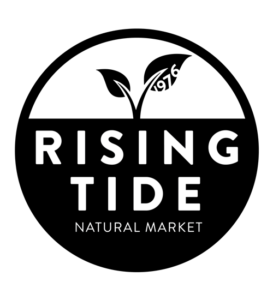Like you, we are beyond excited to get out in the sun, soak up some precious Vit D, and do all the outdoor things we’ve dying to do all winter long. The only hitch: when it comes to sun exposure, how do we protect ourselves from sunburn, aging and skin cancer? Which sunscreens are the most effective? How often (and how much) should we apply?
Here at Rising Tide Market, we look to the Environmental Working Group (EWG), a non-profit, non-partisan organization dedicated to protecting human health and the environment, when stocking our sunscreens for summer.
Each year at this time, EWG creates a Sunscreen Guide to help shoppers locate those products that score highest on different criteria such as:
- how well it protects against UVA and UVB rays
- how harmful the ingredients are known to be to humans
- how well the ingredients hold up over time
It’s all this great research that led us to All Good sun products.
Launched by massage therapist and outdoor enthusiast Caroline Duell with a goal of connecting nature with healing, All Good’s sun protection products ALWAYS put the planet first.
Try:
- All Good Kid’s Sunscreen, SPF 33, featuring non-nanoparticle zinc oxide and calendula, chamomile, and sunflower oil to soothe kids’ sensitive skin
- Sport Sunscreen, SPF33, made with non-nanoparticle zinc oxide and jojoba oil
- All Good Sunscreen butter with SPF50, water resistant for up to 80 minutes!
- All Good Broad Spectrum Sunsticks (SPF30) in Unscented and Coconut. Made with an oil and wax base, the Sunsticks hold up to the most rigorous activities.
Now that we’re sure our sunscreen matches our healthy lifestyle, let’s make sure we use it the right way. When it comes to sunscreen, no product will be effective if we don’t apply it—and re-apply it—properly. The American Cancer Society recommends lathering up early (30 minutes before going outside), regularly (after being in the water, sweating a lot or towel drying) and generously (The American Academy of Dermatology recommends applying one ounce — about a palm-full –evenly to all exposed skin). Studies show that most people apply only half to a quarter of the suggested amount, which means the actual SPF they have on their body is lower than advertised.
Also, it’s important to remember that sunscreen is just one part of a sun-healthy lifestyle. Limiting sun exposure and wearing protective clothing are also important.
Let the Sunshine!
